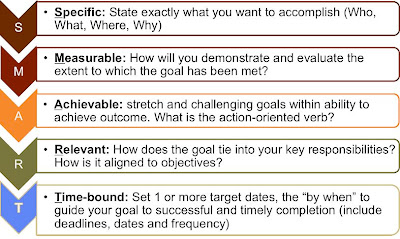In today's lecture Dr. Mandi asked us to perform
valley crossing exercise in a group of three. The agenda behind this exercise
was to learn Organizational Management.
The task at hand required a group of three people to move
from left side of the valley to the right side with the help of a pole. After
closely analyzing the task I would say the key ingredient to success were
1) Coordination among
team members
2) Efficient execution
of the strategy devise
This activity
also demonstrated how an organization works, how the roles and responsibilities
are assigned to the employees and how safety can become an important aspect in
increasing the efficiency of the organization.
Team work is
very important
There were 3 states that came up during valley crossing
which are listed as below
Safe State: Safe state is the one in which both the feet
of a person is on ground and he is in not in danger.
Half Safe: Half Safe is the state in which one leg of the
man is in air and the other one on ground.
Full Risky: Full risky is the state in which both the
legs of the man is in air and his body weight is supported by the other two
men.
All these states are clear from the below picture:
Main learning's from the above exercise can be summarized as below:
1. Responsibility: Every role is equally responsible. In a team every person
shares a similar role but not the same role i.e. there is no differentiation of
work between the persons doing the valley crossing.
2. Faith:Trust was necessary for them because when somebody was in
full risky state all of his hope was on the other two and if any of the two
failed then he could have fallen into the valley
3. Effective Strategy Implementation:Strategy and planning are futile without effective
implementation
4. Training:Proper training is essential to achieve the desired level
of results
5. Goal:There should be a well defined goal and every team member
should have absolute clarity about it
6. Trust:Mutual trust and belief are the foundation of a good team
7. Leadership:Leadership and team work aren’t two separate entities.
Collective leadership from the team delivers optimum results
8. Accountability And Responsibility:Every team member is accountable and responsible for the
job at hand
9. Innovation:There has to be openness in terms of new ideas and suggestion
Keep looking this space for updates !!!
-Ajit
Keep looking this space for updates !!!
-Ajit



